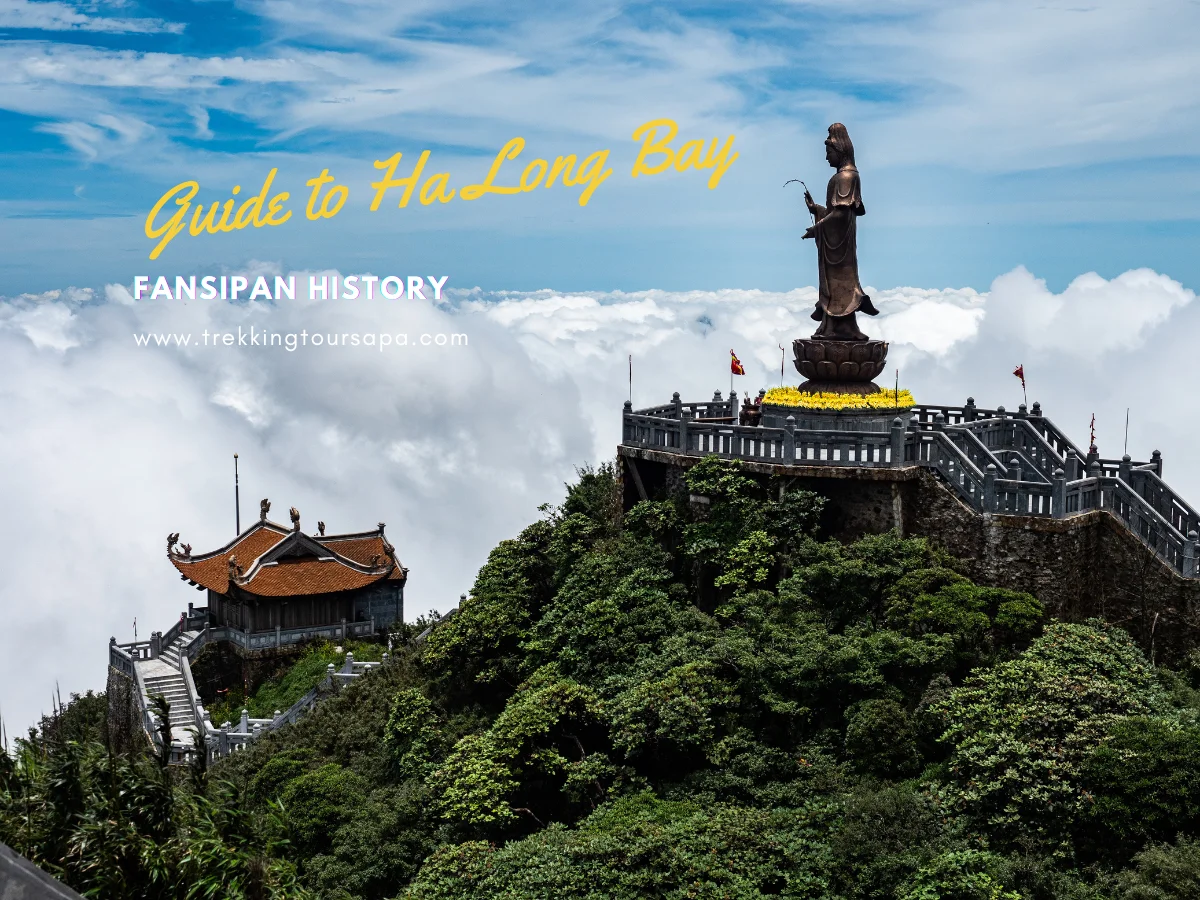Amidst the vast mosaic of Vietnam’s natural splendors lies Fansipan Mountain, not only the highest peak in Indochina but also a living myth that weaves history with the threads of the divine. In our quest to understand the deeper significance of this towering giant, we delve into Fansipan history, unveiling tales as lofty as its summit and traditions as intricate as its paths. It’s a place where the spiritual realm greets the earth, shrouded in mist, mystery, and the solemn respect of Vietnamese traditions. Fansipan’s legacy is etched not just into the land but into the hearts of all who revere it, remaining a testament to its cultural significance in Vietnam’s tapestry of heritage. Join us as we embark on a narrative journey, scaling the heights of legend, and discovering the cultural heart that beats atop the Roof of Indochina.
Key Takeaways
- Understanding the storied Fansipan history and its place in Vietnamese culture.
- Exploring the spiritual significance attached to Fansipan Mountain, the revered highest peak in Indochina.
- Discovering the deep connection between Fansipan Mountain and Vietnamese traditions.
- Unraveling the rich folklore and how it contributes to the cultural significance of the region.
- Appreciating the role of Fansipan as a symbol of national pride and identity.
Table of Contents
ToggleUnveiling Fansipan History
As we delve into the storied past of Fansipan, it’s essential to understand its profound impact on Vietnam’s cultural landscape. Known for its majestic stature within the Hoang Lien Son range, Fansipan’s history is steeped in reverence and awe, a tapestry woven from the fabric of Vietnamese folklore and legends.
The Origins and Significance of Vietnam’s Highest Mountain
The origins of Fansipan are shrouded in the mists of antiquity, where it reigned as a sacred mountain, an abode for benevolent deities. Towering at 9,842 feet, this pinnacle is a natural monument deeply ingrained in the regional narrative. Its varied appellations bespeak its towering grandeur and the distinctive flora like azaleas that adorn its slopes. The term “Fansipan” itself generates curiosity, a derivative from local dialects reflecting the mountain’s awe-inspiring presence.
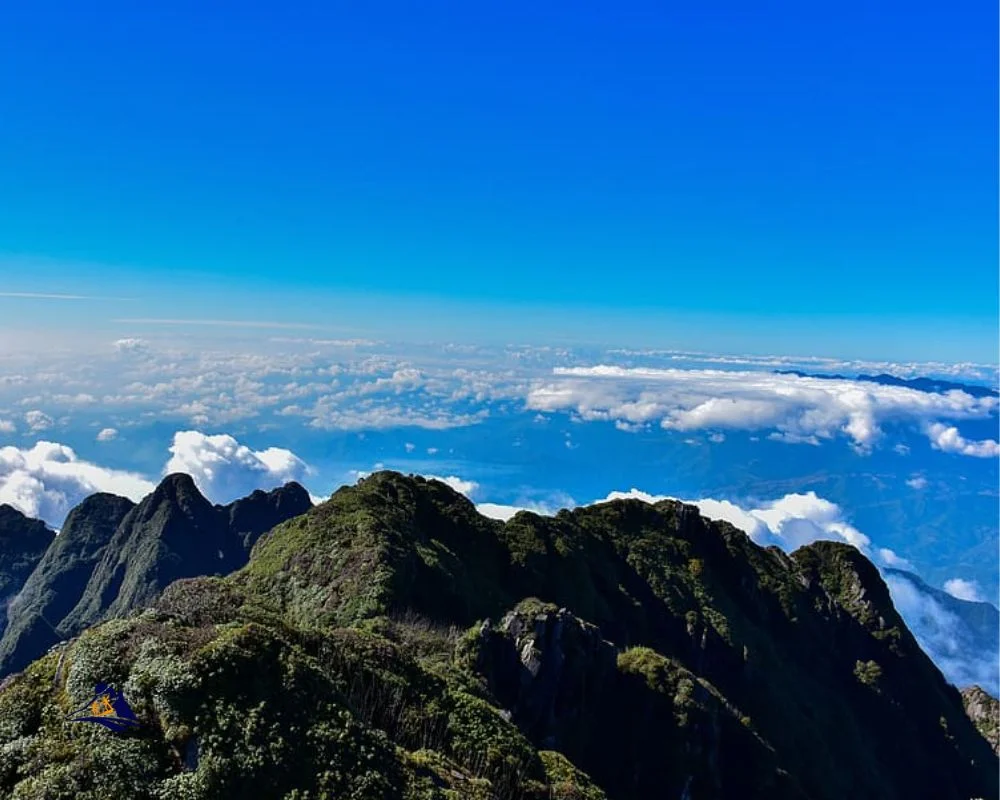
Legends and Mythology Associated with Fansipan
Entwined with the very core of the mountain are the legends of Fansipan, rich in dragon lore and mystical creatures endowed with divine favor. The revered Dragon King, a symbol of life and protection, presides over Fansipan, endorsing its spiritual significance. Tales of enchanted fauna that tread along its paths have captivated many, fueling a belief in the mountain’s power to bestow spiritual energy upon those who scale its lofty heights. These legends of Fansipan have transcended generations, enhancing the mountain’s mythical stature within Vietnam.
The Geographical Marvel of Fansipan Mountain
As adventurous spirits, we’re often captivated by nature’s grand designs, and amongst these, Fansipan mountain, a poetic symphony of rock, verdure, and sky claims a special place in our hearts. Resting within the Hoang Lien Son range, this monumental peak watches over the landscapes of Vietnam as the highest peak in Indochina, reaching a sky-piercing height of 3,147.3 meters.
Gracefully straddling the provinces of Lai Châu and Lào Cai, Fansipan’s presence is a beacon of natural splendor that draws in those who seek the thrill of height and the serenity of lofty spaces. The terrain here is an impressive showcase of the Earth’s artistry, woven with the rugged textures of mountain stone and adorned with the vibrant hues of alpine vegetation. This geographic giant is not just a point on a map but a towering pillar of serenity, extending an open invitation to the daring at heart to explore its majesty.
When discussing the geographical marvels of the Fansipan, it’s enlightening to juxtapose its towering height with other renowned peaks. Let’s delve into the comparative heights within the illustrious Hoang Lien Son range:
Sapa 1 Day Tours
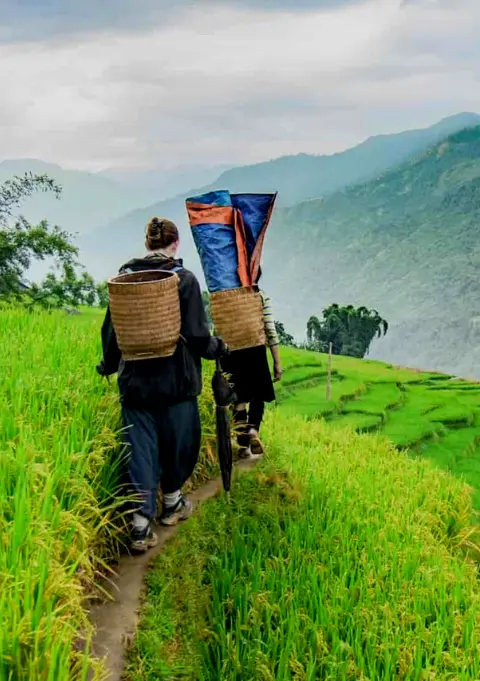
- 1 day experience
- Moderate to challenging
- Cultural immersion & active adventure
- Rice fields, valleys & villages
- Private tours
- Vegan-friendly
Sapa 2 Day Tours
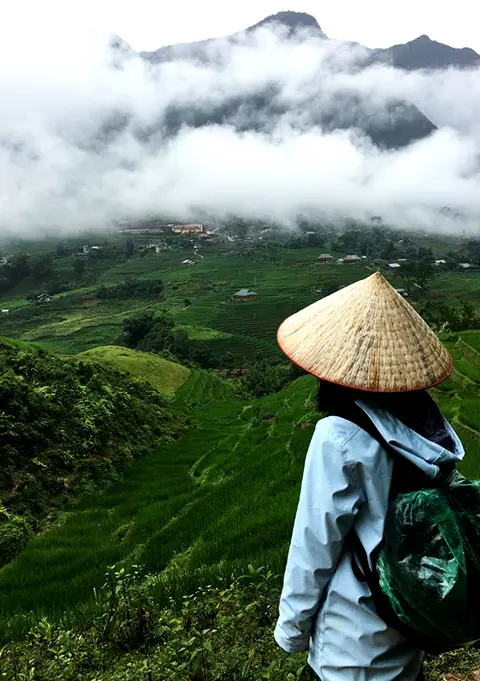
- 2 days 1 night experience
- Moderate to challenging
- Cultural immersion & active adventure
- Mountains, valleys, rice fields and villages
- Private tours
- Vegan-friendly
Sapa 3 Day Tours
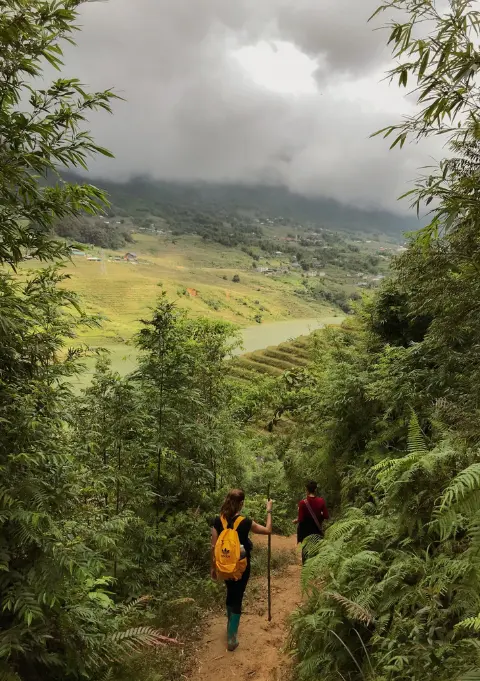
- 3 days 2 night experience
- Moderate to challenging
- Cultural immersion & active adventure
- Mountains, valley, rice fields & villages
- Private tours
- Vegan-friendly
Sapa 4 Day Tours
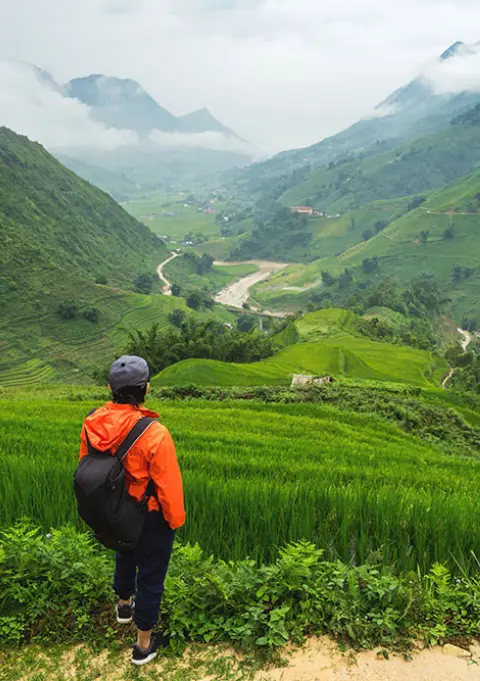
- 4 days 3 night experience
- Moderate to challenging
- Cultural immersion & active adventure
- Mountains, valleys, rice fields & villages
- Private tours – Less Touristic
- Vegan-friendly
| Mountain Peak | Height (meters) | Location |
|---|---|---|
| Fansipan | 3,147.3 | Lai Châu/Lào Cai Provinces |
| Putaleng | 3,049 | Lai Châu Province |
| Y Lý | 2,967 | Lai Châu Province |
| Bach Moc Luong Tu | 3,046 | Lai Châu/Lào Cai Provinces |
Emerging from the mists of time, Fansipan’s terrains have been etched by the elements, crafting landscapes so expansive and so dramatic, they border on the mythical. And we, as keepers of our planet’s stories, are drawn to these heights not just for the climb but for the chance to commune with the sky. In the presence of Fansipan, the mistress of Indochina’s topography, we find ourselves not mere visitors, but part of a legacy written on the wind and whispered amongst the peaks.
Myths and Folklore: The Spiritual Essence of Fansipan
Steeped in centuries-old traditions, Vietnamese folklore often serves as a sacred repository of the nation’s collective psyche. Among the tapestry of myths lies the exalted Legends of Fansipan, which capture the shared heritage and spiritual energy intricately linked with Vietnam’s most revered mountain peak.
Folk tales not only enchant listeners but also convey profound truths and principles that resonate deeply within the Vietnamese culture. Dive with us into the mystical world that shrouds Fansipan in an eternal aura of mystique and veneration.
Vietnamese Lore and the Dragon King of Fansipan
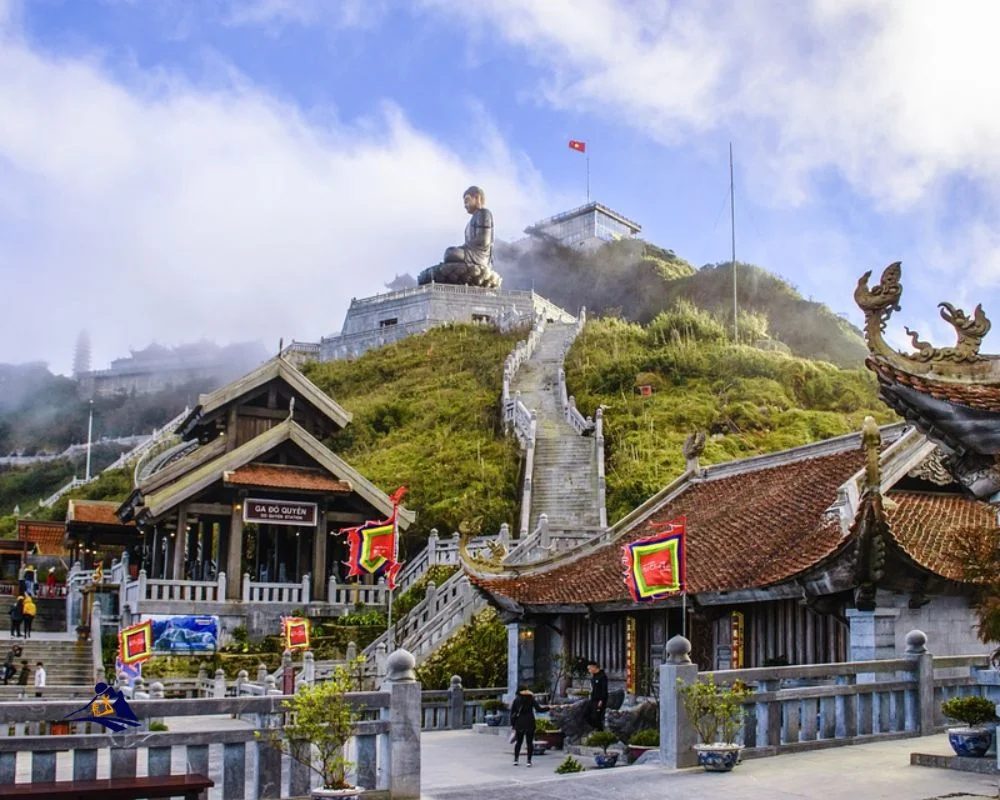
Within the heart of these legends pulses the narrative of the Dragon King, the celestial guardian of Fansipan. Embodiment of might and mercy, this legendary figure commands the weather and safeguards the myriad of beings that traverse the mountain’s vast realms. This symbol of protection reinforces the cultural significance of Vietnamese folklore as a testament to the enduring connection between the land and its people.
The Magical Creatures and Tales of Power
The sloping terrains of Fansipan are rumored to be home to enchanting creatures, each bearing unique supernatural gifts. These beings, woven into the fabric of local lore, are said to bestow those who reach the summit with spiritual energy and unwavering courage. Such fables serve as a beacon, inspiring individuals from near and far to embark on a transformative journey to the pinnacle, where the physical and ethereal realms entwine.
“Those who tread the sacred paths of Fansipan are forever changed, as the mountain’s spirit endows them with ancient wisdom and an indomitable soul.” – Ancestral Saying
Is your curiosity piqued? Are you ready to embrace the spiritual sojourn that tens of thousands before have traversed, a voyage that illuminates the profound cultural significance within every step? Let us tread softly in the whispered footsteps of legend, where dragons soar the sky and mystical beings roam, atop the magnificent Fansipan.
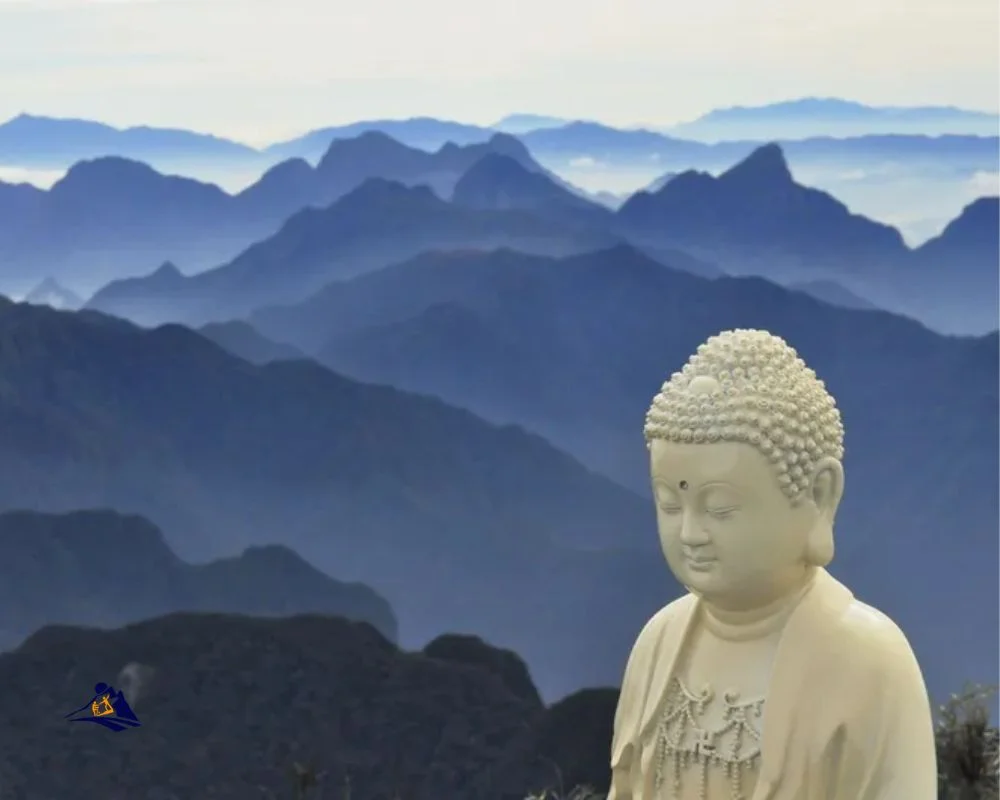
Historical Chronology: The Transformation of Fansipan
Tracing the Fansipan history back to its geological birth during the Paleozoic era, we can glimpse the profound changes over hundreds of millions of years. Through the eons, nature’s mighty forces have sculpted the awe-inspiring Hoang Lien Son range, elevating Fansipan to its soaring heights and etching a story in stone that’s as ancient as it is dynamic. Let’s journey through time and unveil the manifold eras that have shaped the essence of Vietnam’s towering zenith.
- The prehistoric origins of Fansipan, forming approximately 250 million years ago.
- Shaped by the Himalayan orogeny, contributing to the towering prominence of the Hoang Lien Son range.
- The mountain becoming a silent witness to the ebb and flow of ancient empires rising and falling in the surrounding regions.
- A period of exploration and mapping by French colonists during the colonial era, adding Fansipan to modern maps.
- The rise of Fansipan as a beacon for adventurers and nature-lovers in the era of modern tourism.
Each layer of time has bestowed its own narrative, enriching the historical facts known about Fansipan today. From an untouched wilderness to a symbol of national pride and a hotspot for trekkers, this mountain has transformed whilst standing firm – a constant against the winds of change. So, when we ascend its trails, we walk paths entwined with history, stepping where countless souls have tread before, each drawn by the timeless allure of the magnificent Hoang Lien Son range.
Sapa 1 Day Tours

- 1 day experience
- Moderate to challenging
- Cultural immersion & active adventure
- Rice fields, valleys & villages
- Private tours
- Vegan-friendly
Sapa 2 Day Tours

- 2 days 1 night experience
- Moderate to challenging
- Cultural immersion & active adventure
- Mountains, valleys, rice fields and villages
- Private tours
- Vegan-friendly
Sapa 3 Day Tours

- 3 days 2 night experience
- Moderate to challenging
- Cultural immersion & active adventure
- Mountains, valley, rice fields & villages
- Private tours
- Vegan-friendly
Sapa 4 Day Tours

- 4 days 3 night experience
- Moderate to challenging
- Cultural immersion & active adventure
- Mountains, valleys, rice fields & villages
- Private tours – Less Touristic
- Vegan-friendly
Cultural Significance of Fansipan in Vietnamese Traditions
The majestic Fansipan Mountain holds a place of honor in the hearts of the Vietnamese people, not merely for its breathtaking elevation but as a pillar of their spiritual and cultural identity. For us, Fansipan is more than a point on a map; it encapsulates the cultural significance that threads through our Vietnamese traditions. This revered mountain has become a natural amphitheater where the lines between the earthly and the celestial blur, offering a window into our society’s ancient beliefs and contemporary practices.
Understanding Fansipan’s profound impact on our culture can be seen in the various festivals and rituals that dot the calendar. Below is a detailed table that highlights some of these traditions and how Fansipan serves as their backdrop.
| Festival | Date | Significance | Activities |
|---|---|---|---|
| Quang Trung Festival | Lunar New Year | Honors the hero of the Ngọc Hồi – Đống Đa victory | Dragon dances, offerings, and historical reenactments |
| Xuân Trường Festival | Spring season | Celebrates the prosperity and fertility of the new year | Traditional games, folk singing, and processions |
| Nghinh Ong Festival | August (Lunar Calendar) | Shows reverence for the Whale God, to ensure safe and prosperous fishing | Boat races, fisherman’s dance, and sea procession |
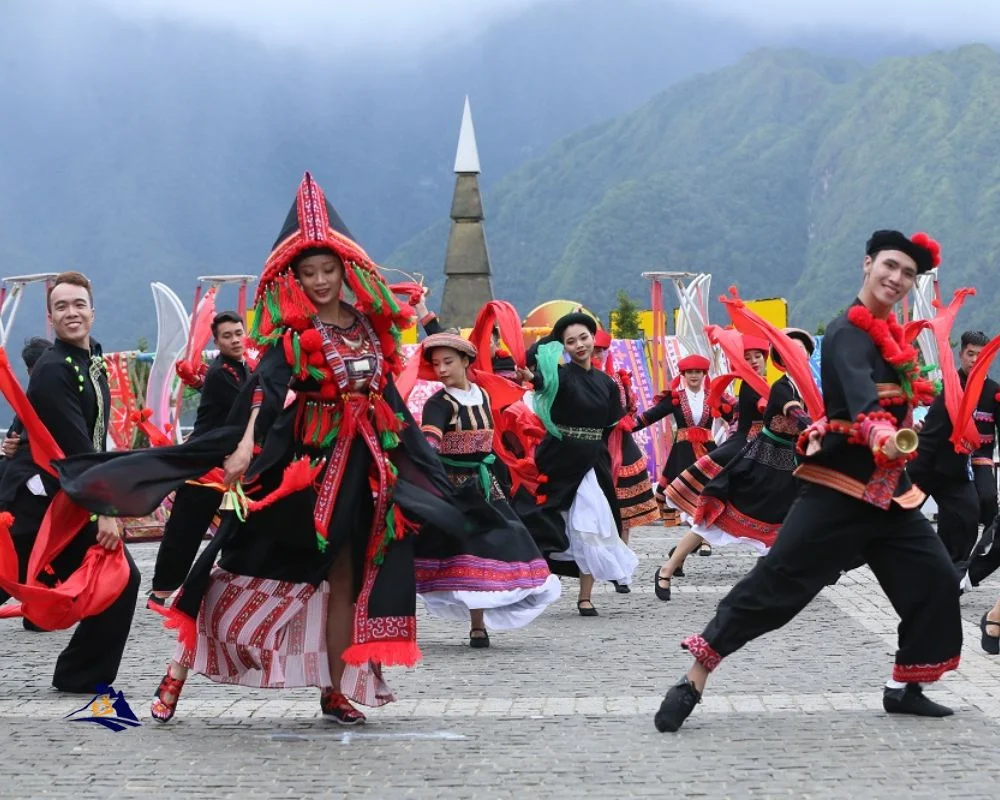
As we weave our way through the rich tapestry of our heritage, it’s clear that Fansipan Mountain is a lynchpin in the collective consciousness of our people. It’s where our ancestors have worshipped, where our myths have taken flight, and where, even today, we find solace and spiritual grounding amid its towering peaks.
Our reverence for Fansipan is also mirrored in the rights of passage that are deeply rooted within our ethnic communities. For generations, the paths leading up to its summit have been traversed by those seeking spiritual enlightenment, and the experience is said to bond an individual to the soul of Vietnam.
In conclusion, the Fansipan mountain is more than Vietnam’s highest peak; it’s a symbol of our unity, faith, and resilience—a testament to the enduring spirit that characterizes Vietnamese traditions and our cultural ethos.
Climbing Fansipan: A Trek to the Clouds
As we set our sights on the mesmerizing heights of Mount Fansipan Sapa, many of us dream of tracing the footsteps of legends. This proud sentinel of Vietnam offers the quintessential high altitudes trekking experience, often referred to as ‘a trek to the clouds.’ For those poised to undertake climbing Fansipan, rigorous preparation and the right essential gear can make the difference between a grueling ordeal and an exhilarating adventure.
Essential Gear and Tips for Aspiring Climbers
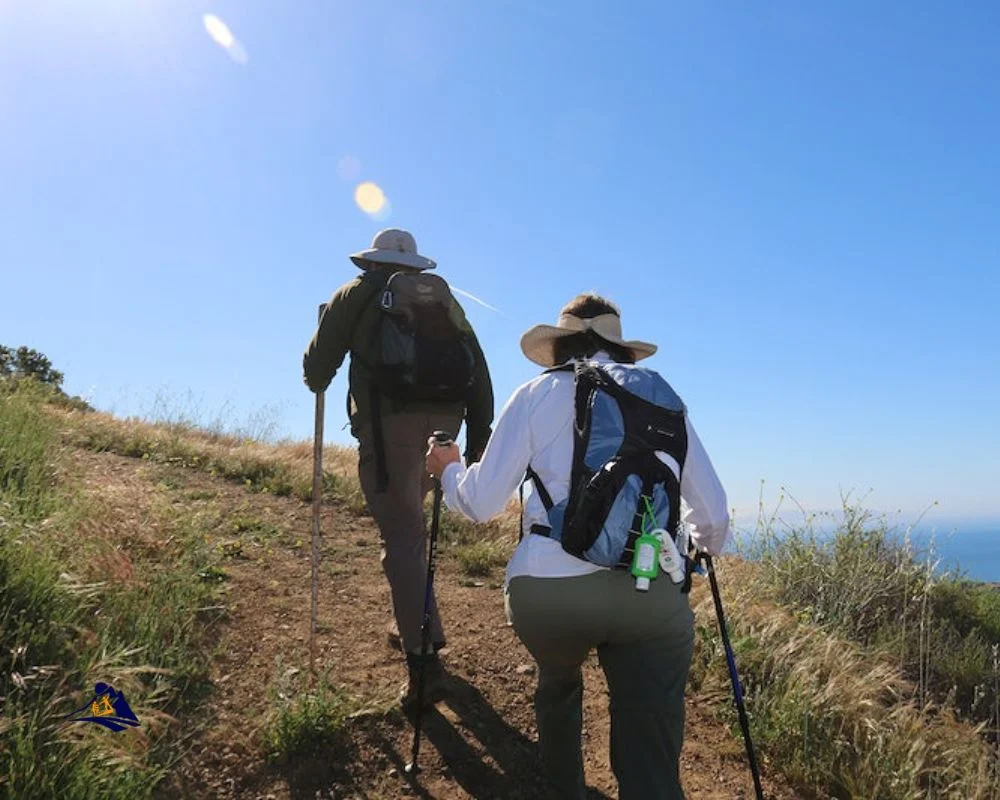
Before you embark on your journey through the ethereal mists, it’s imperative to equip yourself with gear that will safeguard your climb. The essential gear list must include dependable footwear to maintain traction along hiking routes, clothing adept at warding off the chill of the higher elevations, and a waterproof shell to keep the unpredictable elements at bay. Don’t underestimate the power of the sun even in cooler weather; adequate sun protection is a must. Furthermore, a torchlight becomes your nocturnal companion, critical for the dim passages that you may encounter.
Diligent planning also means considering the experience of local guides. These seasoned escorts not only enhance the safety aspect of your trek up Fansipan but also serve as emissaries of local lore, endowing your climb with cultural richness and historic meaning. As they guide you safely across soaring ridges and through lush valleys, you’ll find the journey as rewarding as the destination itself.
The Various Routes to Conquer the Peak
The trails to the summit of Fansipan are as diverse as they are awe-inspiring. Here’s a closer look at the main pathways, inviting trekkers of varied proficiency levels:
| Route | Difficulty | Estimated Duration | Scenic Highlights |
|---|---|---|---|
| Tram Ton Pass | Moderate | 6-8 hours ascent | Panoramic views of Hoang Lien Son range |
| Sin Chai | Hard | 2-day trek | Dense forest landscapes, less crowded |
| Cat Cat Village | Moderate to Hard | 2-day trek | Cultural interaction, terraced fields |
| Cable Car & Peak Climb | Easy | 20 minutes (Cable Car) + 1-hour climb | Breathtaking ascent, modern accessibility |
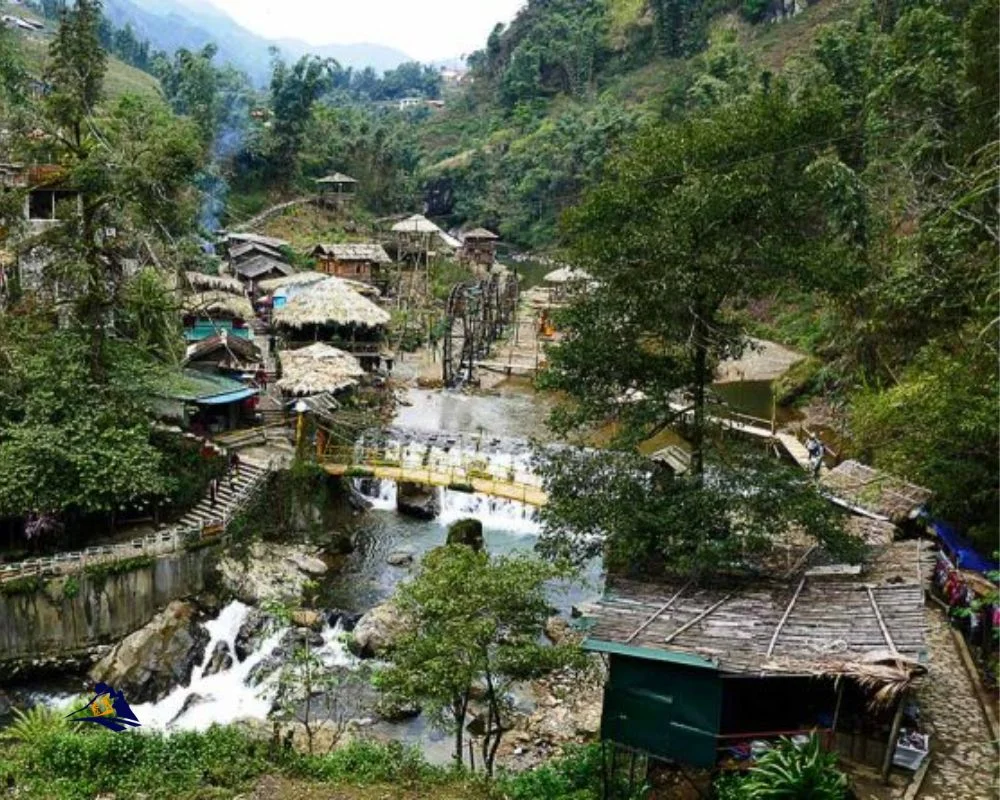
Whether you tackle the rugged trails head-on or ascend gracefully by cable car to meet the last leg of the ascent, the journey to Fansipan’s peak is imbued with a timeless allure, blending the raw beauty of nature with human tenacity. As we prepare to conquer these trails, let’s breathe in the rarefied air and embrace the challenge — for to climb Fansipan is to touch the sky itself.
Fansipan History: Documenting the Evolution of Exploration
As avid supporters of historical chronicles, we have closely followed the exceptional transformation in how explorers and visitors alike climb Fansipan. What was once a rugged voyage limited to only the most intrepid of travelers has broadened its horizons, encapsulating both the valor of the past and the pioneering spirit of the present. The Fansipan mountain, steeped in deep-rooted narratives, now unfolds its stories to a diverse array of enthusiasts. Our journey today reflects the profound shifts in Fansipan’s history, honoring the timeless allure of Indochina’s zenith through modern innovations.
Ascending Fansipan used to be the ultimate test of endurance and spirit, a multiple-day endeavor that called to the brave. Now, it beckons to all who wish to witness the splendor of Vietnam from its highest vantage point.
We’ve compiled pivotal moments that mark the evolution of how adventurers approach the climb:
- The traditional multi-day treks that ignited the spirit of exploration up the Fansipan Mountain.
- The introduction of local guide expertise to enhance climbers’ experiences and safety.
- The groundbreaking debut of the Fansipan cable car, reshaping access to the mountain’s summit.
| Year | Exploration Milestone | Impact on Fansipan Access |
|---|---|---|
| Early 1900s | First recorded ascents by local and international mountaineers | Emphasized physical prowess and endurance, limited to a niche group of explorers |
| Mid-20th Century | Establishment of local guiding practices | Aided in safe navigation and cultural exchange, expanded the reach to earnest adventurers |
| 2016 | Inauguration of the Fansipan cable car system | Revolutionized the ascent, making the peak attainable within 20 minutes for all visitors |

We marvel at these milestones, each a verse in the grand poem of Fansipan history. They narrate not only the tangible shifts in exploration but also the intangible essence of human curiosity and the relentless pursuit of new horizons. It’s a testament to how the climb up Fansipan has evolved from a physical endeavor to an inclusive experience. As we continue to touch the skies and embrace the view from atop Fansipan mountain, we join a narrative that is constantly being rewritten, preserving the enduring legacy of this majestic peak.
The Flora and Fauna of Hoang Lien Son Range
Within the majestic bounds of the Fansipan mountain, part of the renowned Hoang Lien Son range, lies a world abundant with life. As we tread softly on this revered ground, the air grows cooler, and a remarkable transition unfolds—vibrant tropical rainforests give way to stoic coniferous woods, painting a living portrait of nature’s versatility at high elevations. It’s in these heights, among the clouds, that a unique ecological tapestry is woven.
Exploring the Biodiversity at High Elevations
The higher we climb, the clearer it becomes that Fansipan mountain is not just the highest peak in Indochina but also a nurturing cradle for an incredible array of biodiversity. The flourishing flora at these lofty altitudes are a rare sight to behold—rhododendrons set the slopes ablaze with color amidst the evergreen canvas. Every breath of crisp mountain air fills our lungs with the untouched purity of ancient woodlands, a signal of the enduring richness of the Hoang Lien Son range.
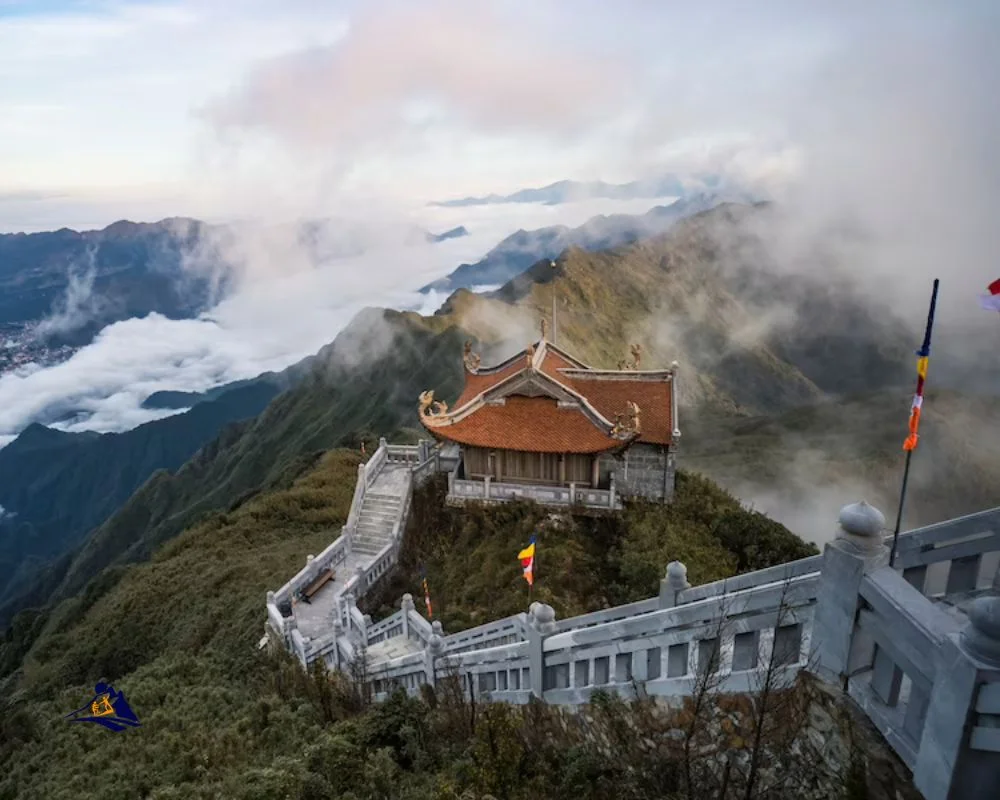
Endemic Species Exclusive to Fansipan’s Ecosystem
As guardians of this ethereal landscape, we’re humbled by the tapestry of life that Fansipan mountain harbors, especially the endemic species that call these high elevations home. Civets stealthily navigate through dense bamboo while the melodic calls of the white-rumped shama echo. Black bears roam with a silent strength that matches the mountain’s own. Each species, a thread in the intricate web of existence, has adapted to the unique challenges posed by the Fansipan mountain’s towering heights.
Together, as we explore and pay homage to the living wonders of Fansipan, we’re reminded of our responsibility—to protect and cherish the beauty of the Hoang Lien Son range. It’s not just about today’s journey, but about ensuring that these incredible species and their ecosystem continue to thrive—standing as a testament to the highest peak in Indochina, and the wonders it holds.
Fansipan in Modern Times: The Impact of Tourism
As the jewel of the Hoang Lien Son range, Fansipan mountain has seen a surge in tourism, transforming the region and revitalizing its economic landscape. We recognize the delicate dance between nature’s timeless rhythms and the modern beat of travel and exploration. Fansipan’s evolution into a tourist hotspot has been nothing short of extraordinary, ensuring that both its raw beauty and mystique are more accessible than ever before.
The development of the Sun World Fansipan Legend complex has not only increased visitation numbers; it has reshaped the very infrastructure and dynamics of local tourism. With the inclusion of a cable car system and opulent amenities, this initiative has effectively launched Fansipan onto the global stage, cementing its reputation as a premier destination in Vietnam’s burgeoning travel industry.
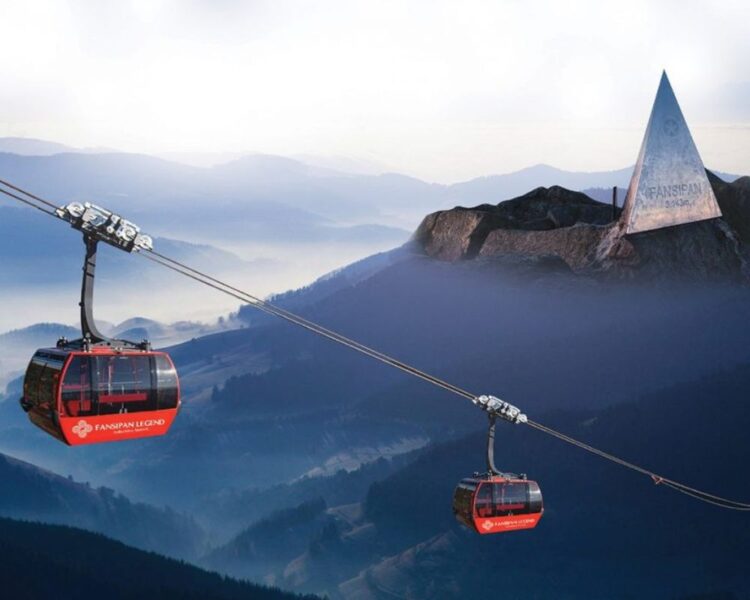
| Year | Visitor Count | Notable Features |
|---|---|---|
| 2015 (Pre-Cable Car) | 15,000 | Natural treks |
| 2016 (Post-Cable Car) | 100,000 | Addition of cable car transportation |
| 2022 | Over 250,000 | Expanded luxury facilities |
Our collective ambition is to preserve Fansipan’s unique ecosystem and rich cultural history while continuing to thrive in an era marked by significant tourist footfall. With shifting global trends emphasizing sustainable travel, we devote ourselves to ensuring that Fansipan’s splendor endures for future generations to marvel at, all while providing an enriching experience that supports local communities.
- Commitment to eco-friendly practices
- Educational programs about cultural heritage
- Ongoing infrastructure improvements for optimal visitor experience
“To ascend Fansipan is to walk amongst the clouds and immerse oneself in Vietnam’s heart and soul.”
Engineering Feats: Fansipan’s Cable Car and Funicular
As we explore the pinnacle of Vietnamese engineering marvels, the Fansipan’s cable car stands out as a testament to human ingenuity and determination. Since its launch on February 2, 2016, the cable car has been a focal point of admiration, earning two prestigious Guinness World Records. Not only does it hold the record for length but also for the greatest elevation difference by a non-stop three-roped cable car. The experience aboard this technological wonder transforms the journey to Fansipan mountain summit from an arduous trek into an awe-inspiring ride through the clouds.
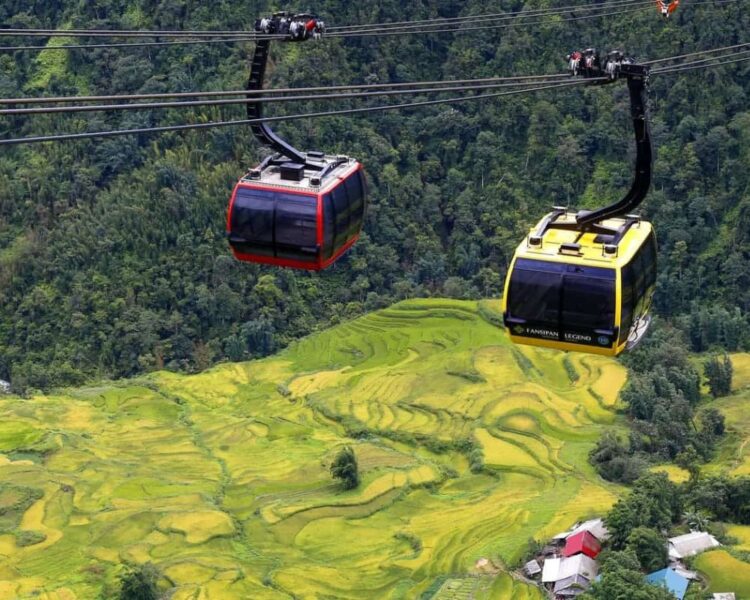
Let’s delve deeper into the specifics that make this cable car not just an attraction but a hallmark among engineering feats. Below are the details that enable us to appreciate the intricate design and scale of work that went into this incredible construction:
| Fansipan Cable Car Details: | |
|---|---|
| Feature | Description |
| Cable Car Length | 6,282.5 meters (20,622 ft) |
| Elevation Gain | 1,410 meters starting from the Muong Hoa Valley |
| Time to Summit | Mere 20 minutes ride to Fansipan’s peak |
| Capacity | Can transport up to 2,000 people per hour |
| Launch Date | February 2, 2016 |
| World Records | Guinness World Records for longest non-stop three-roped cable car and greatest elevation difference |
The Muong Hoa funicular, another impressive feat, further augments the accessibility of Fansipan. With this addition, reaching the sacred summit no longer requires the physical toll that once limited the experience to only seasoned hikers. By marrying modern engineering with natural splendor, the cable car and funicular have redefined what it means to encounter the majestic Fansipan.
Embracing the Elements: Fansipan’s Weather Patterns
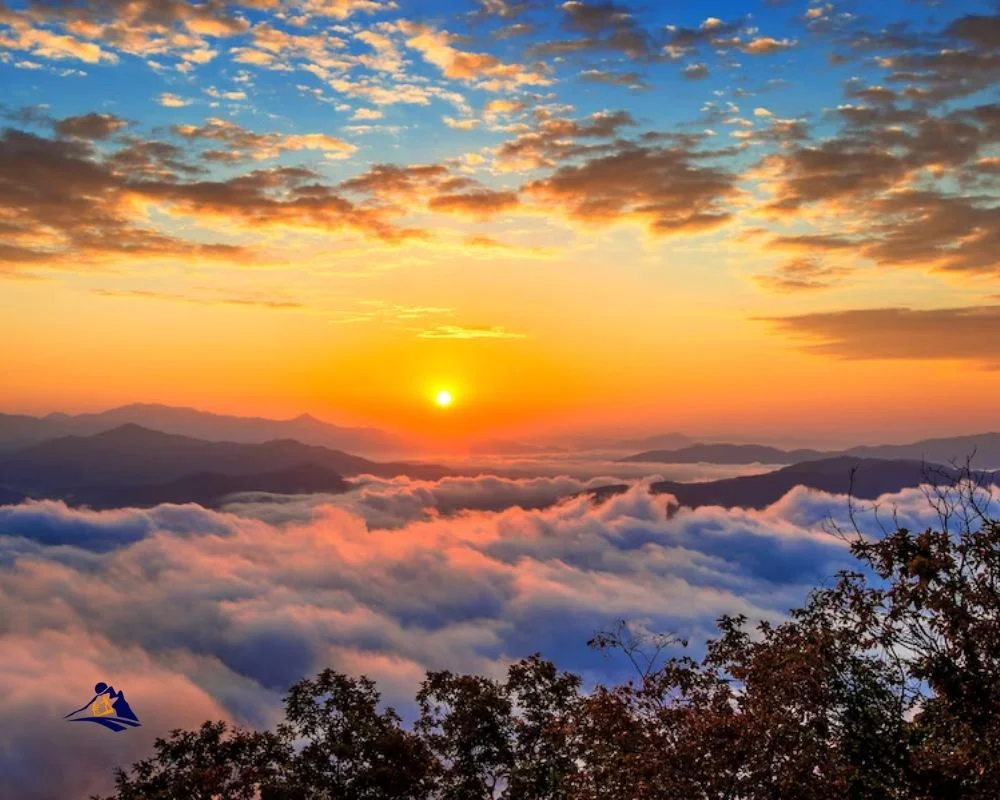
Fansipan weather offers a distinct experience with its seasonal climate making it an enticing challenge for climbers and a mesmerizing destination for tourists. As the highest peak in Indochina, the weather here serves as a thrilling acquaintance with nature’s unpredictability and beauty.
Spring in Fansipan greets climbers with a dramatic change from the chill of winter, shrouding the mountain in a gentle mist that enhances the mystique of this storied peak. The transition to summer unveils a vibrant explosion of flora, with the mountain sides awash in rich green hues and punctuated by the colorful blooms of wildflowers.
Autumn casts a different spell on Fansipan, bringing cooler breezes and a symphony of rustling leaves. The horizon is adorned with cloud rolls that create a dreamlike state, softening the stark outlines of the mountain. Winter, however, pulls the temperature down to freezing levels, cloaking Fansipan in a crystalline snow cover that commands respect from all who dare to ascend during this time.
- Spring: Mild temperatures and misty veils
- Summer: Warm weather and full flora bloom
- Autumn: Cool breeze with breathtaking cloud formations
- Winter: Freezing temperatures with snow and ice
As we embrace the elements that define Fansipan’s climate, it’s crucial for us to respect the mountain’s ever-changing wardrobe and come prepared for all it has to offer. Whether we seek the thrill of an icy summit or the serene beauty of an alpine sunrise, Fansipan’s weather is an integral part of the journey, urging us to witness the mountain in all its seasonal glory.
Experiencing the Rooftop of Indochina: Practical Information for Visitors
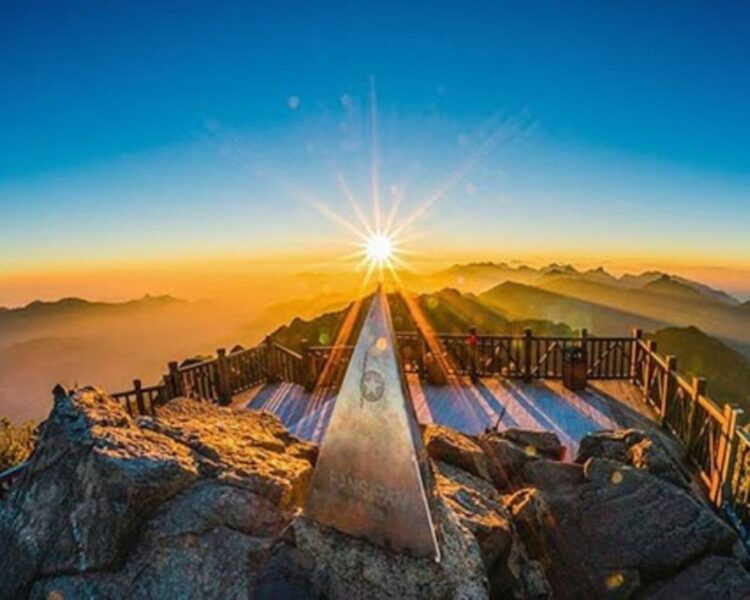
As we aim to climb Fansipan or simply wish to stand tall at the Fansipan summit, understanding the practical aspects of such a journey is crucial for a seamless experience. Let’s delve into the vital tips and information to ensure our visit to the magnificent Hoang Lien Son range is not only memorable but also well-prepared and safe.
Best Time to Visit: To fully embrace the ascent and appreciate the serene beauty of Fansipan, plan your visit between mid-September to mid-December or mid-March to mid-May. During these windows, you’ll be welcomed with clear skies and friendly trails, perfect for a climb or a leisurely visit.
Dealing with Crowds: If your schedule leads you to visit Fansipan during the high season from June to August, prepare for a more bustling atmosphere. It’s the tourist peak, and while the vibrancy of fellow travelers can be exciting, those seeking solitude should consider the off-peak months.
- Safety First: Whether trekking up the mountain or taking the cable car, safety should always be paramount.
- Pack Smartly: Equally important is to pack appropriately – weather-appropriate clothing, sturdy footwear, and essentials like water, snacks, and a basic first aid kit can make all the difference in your journey.
- Acclimatization: As with any high-altitude adventure, allow your body time to acclimatize to prevent altitude sickness. This is especially important if you’re planning to climb to the summit.
More than reaching the summit for a symbolic selfie, embarking on Fansipan’s terrain is an adventure that promises to immerse you in the ethereal realm above, closer to Vietnam’s heart with every step.
In conclusion, whether your quest is to conquer the peak or simply soak in the panoramic splendors, a trip to Fansipan is an encounter with the extraordinary. Carry these snippets of advice with you as you venture forth to one of Vietnam’s premier natural wonders.
Preservation Efforts: Future of Fansipan’s Natural Landscape
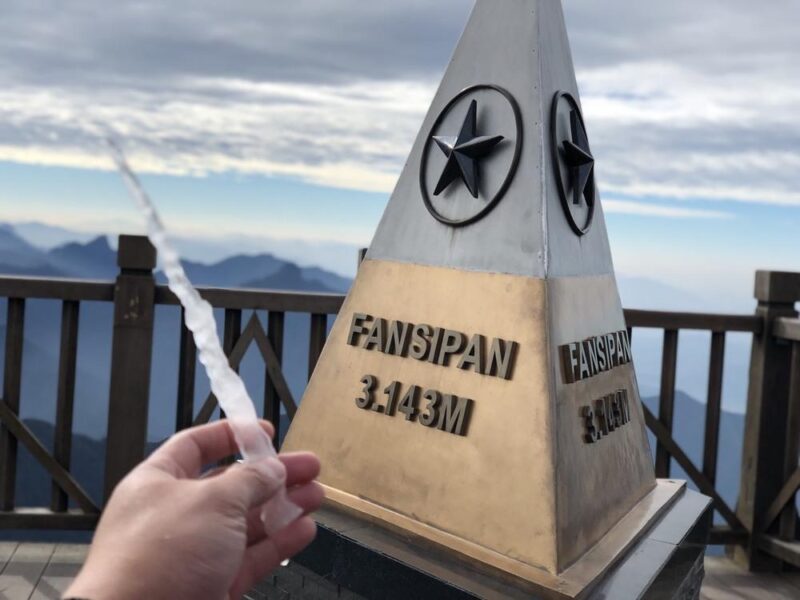
As guardians of the majestic Fansipan, we are committed to the diligent Fansipan preservation efforts that uphold the beauty and vitality of the mountain’s ecosystems. The push to protect Fansipan’s natural landscape is a cornerstone of our pledge to future generations. This initiative ensures that the grandeur of the Hoang Lien Son range continues to be a beacon of natural wonder. Our stewardship involves a harmonious blend of traditional practices and innovative strategies to ensure sustainable tourism and environmental health.
| Conservation Focus | Strategies and Actions | Expected Outcomes |
|---|---|---|
| Biodiversity Protection | Monitoring wildlife populations, habitat restoration, and anti-poaching patrols. | Maintenance of Fansipan’s diverse flora and fauna, with special attention to endemic species. |
| Eco-friendly Tourism | Developing guidelines for responsible travel, capacity limits, and environmental education for tourists. | A balance between visitor experience and conservation, ensuring minimal ecological footprint. |
| Cultural Heritage Integration | Engaging local communities in preservation efforts and promoting cultural awareness among visitors. | Enhanced local participation in Fansipan preservation, fostering pride in regional history and traditions. |
| Research and Monitoring | Implementing scientific studies to assess environmental impacts and inform management decisions. | Adaptation and refinement of conservation tactics based on empirical findings, securing Fansipan’s resilience. |
It is through such focused endeavors that we strive to sustain the intrinsic value of Fansipan and ensure that its storied landscapes remain as inspiring tomorrow as they are today. Join us in celebrating and safeguarding the wondrous terrain of the Hoang Lien Son range, a treasure for both the heart and the eye.
Conclusion
As we gaze upon the vibrant tapestry of Fansipan mountain, it becomes apparent that this is no ordinary peak. It’s a treasured repository of Fansipan history and Vietnamese folklore, replete with stories that have traversed through time, securing its place not just in the topography of Vietnam, but in the hearts of its people. Fansipan stands as a beacon of cultural pride and natural magnificence. Its geological prominence and the vivid tapestry of life it supports underscore its status as an embodiment of Vietnam’s rich heritage.
Our journey across this revered ‘Roof of Indochina’ has revealed its multi-faceted allure—from the mythical to the material. As adventurers, we are drawn to its trails, as environmentalists, we marvel at its biodiversity, and as storytellers, we celebrate its legends. The mountain’s allure is an interlacing of fierce natural beauty and profound human spirit, coalescing into a singular, awe-inspiring narrative. Fansipan, indeed, is more than a mountain; it’s a symbol of human tenacity and nature’s grandeur.
The investment in preservation mirrors our collective commitment to honoring and sustaining the legacy of this extraordinary landscape. As we continue to steward its resources and mysteries, Fansipan promises to remain a fount of inspiration. May the spirit of Fansipan—a symbol of the indomitable will of nature and culture—continue to resonate with those who scale its heights and those who dream of its lofty summits from afar.
Sapa 1 Day Tours

- 1 day experience
- Moderate to challenging
- Cultural immersion & active adventure
- Rice fields, valleys & villages
- Private tours
- Vegan-friendly
Sapa 2 Day Tours

- 2 days 1 night experience
- Moderate to challenging
- Cultural immersion & active adventure
- Mountains, valleys, rice fields and villages
- Private tours
- Vegan-friendly
Sapa 3 Day Tours

- 3 days 2 night experience
- Moderate to challenging
- Cultural immersion & active adventure
- Mountains, valley, rice fields & villages
- Private tours
- Vegan-friendly
Sapa 4 Day Tours

- 4 days 3 night experience
- Moderate to challenging
- Cultural immersion & active adventure
- Mountains, valleys, rice fields & villages
- Private tours – Less Touristic
- Vegan-friendly
